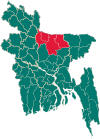
Netrokona is a district of the Mymensingh Division in north-east of Bangladesh.

Melandaha is an upazila of Jamalpur District in the Division of Mymensingh, Bangladesh.
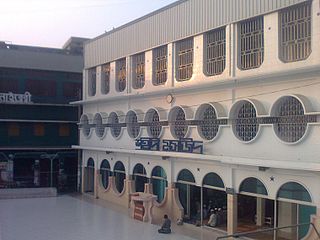
Kishoreganj Sadar is an upazila of Kishoreganj District in Dhaka Division, Bangladesh. It is best known as the home upazila of Syed Nazrul Islam, once an acting President of Bangladesh.

Atpara is the smallest upazila of Netrokona District, in the Division of Mymensingh, Bangladesh.

Barhatta is an upazila of Netrokona District, located in Bangladesh's Mymensingh Division.

Durgapur is an upazila of the Netrokona District in the Mymensingh Division of Bangladesh.
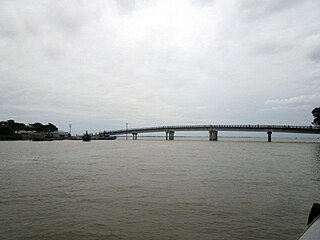
Khaliajuri is an upazila (sub-district) of the Netrokona District in Bangladesh, part of the Mymensingh Division.
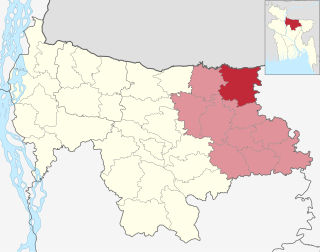
Kalmakanda, originally Karamakhanda, is an upazila of Netrokona District in the Division of Mymensingh, Bangladesh.

Kendua is an upazila of Netrokona District in the Division of Mymensingh, Bangladesh.

Madan is an upazila of Netrokona District in the Division of Mymensingh, Bangladesh.

Purbadhala is an upazila of Netrokona District in the Division of Mymensingh, Bangladesh.

Sherpur Sadar is an upazila of Sherpur District in the Division of Mymensingh, Bangladesh.

Bogra Sadar Upazila is an upazila of Bogra District in the Division of Rajshahi, Bangladesh. Bogra Thana was established in 1821 and was converted into an upazila in 1983. The upazila takes its name from the district and the Bengali word sadar (headquarters). It is the subdistrict where the district headquarters, Bogra town, is located.

Khansama is an upazila of Dinajpur District in the Division of Rangpur, Bangladesh.

Raninagar is an Upazila of Naogaon District in the Division of Rajshahi, Bangladesh.
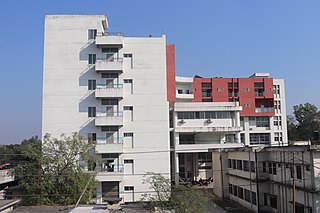
Nilphamari Sadar is an upazila of Nilphamari District in the Division of Rangpur, Bangladesh. Nilphamari Sadar thana was established in 1870. It was under Daroani thana before 1870. It gradually turned into an Upazilla in 1984.

Godagari is an Upazila of Rajshahi District in the Division of Rajshahi, Bangladesh. This is the place where Mahananda river fall to Padma or Ganges.
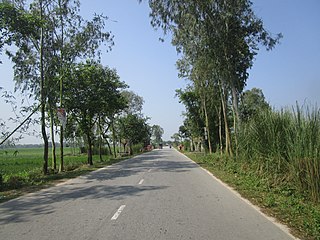
Baliadangi is an Upazila of Thakurgaon District in the Division of Rangpur, Bangladesh.

Thakurgaon Sadar is an upazila of Thakurgaon District in the Division of Rangpur, Bangladesh.
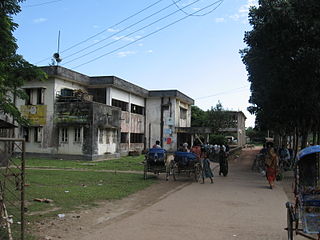
Mohanganj is an upazila of Netrokona District in the Mymensingh division of Bangladesh. It is one of the 10 upazilas of Netrakona district. Mohanganj is largely known as the capital of Lower Bangladesh as it is the economic heart of Lower Bangladesh generally known as Haor.























